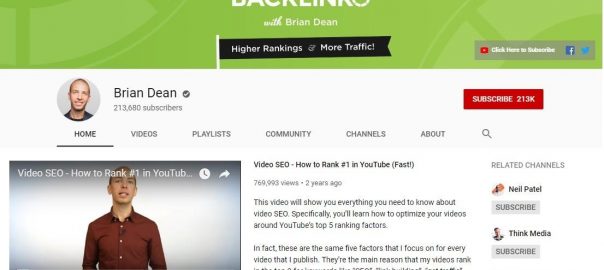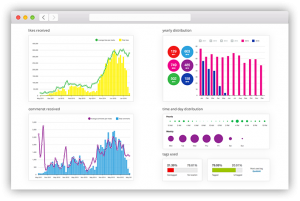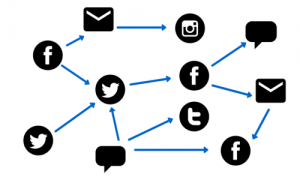— July 30, 2019
Outbound marketing is the best way to get leads quickly.
Let’s say you pay for a commercial to run during the Super Bowl. Potential customers see those ads, and then a tiny fraction of them buy your product. It’s simple, right?
The problem is that it’s also an insanely expensive way to put your offer in front of your target audience. While most viewers expect and even enjoy the commercials during the Super Bowl, when it plays again and again interrupting other games or favorite TV shows, it’s just disruptive. Outbound marketing tactics are always disruptive.
But what if, instead of pushing your offer onto people when they haven’t asked for it, you could use valuable content to draw them in, when they want to come to you?
You can: It’s called inbound marketing. Sure, it takes a while to get going, but once you have an engaged audience of potential customers who trust you, generating leads becomes much, much easier—let me explain.
Inbound marketing: What you need to know
Inbound marketing relies on quality content, whether it’s in the form of articles, emails, videos, podcasts, or books. However, the content landscape is getting more and more competitive due to a virtually unlimited amount of quality content out there. In fact, Mark Schaefer argued back in 2014 that content marketing is not a sustainable strategy and that we are in the age of the so-called content shock.
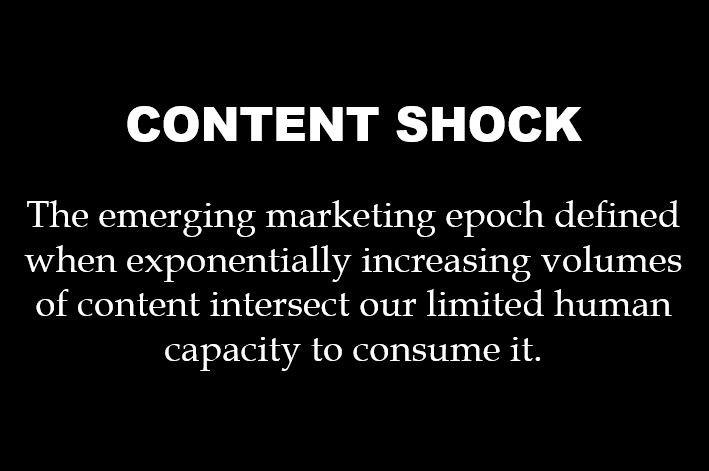
Image via Mark Schaefer
Schaefer predicted that there would inevitably come a point at which producing content that can compete with what’s already out there will simply become too expensive to be a viable marketing strategy.
Take a look at this graph that he used in his post:
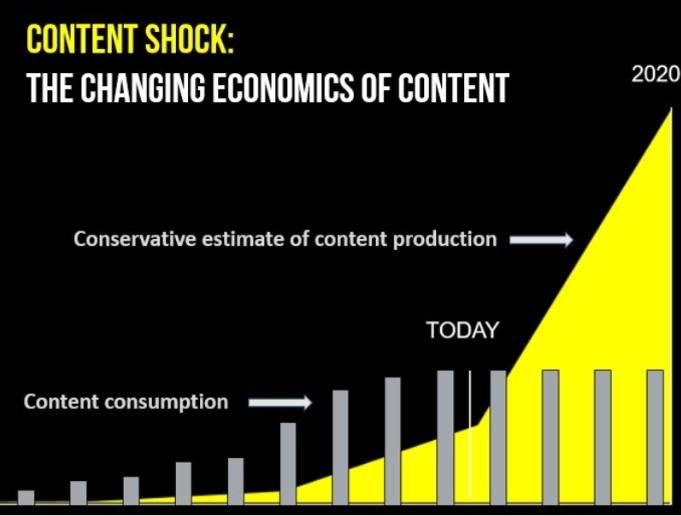
Image via Mark Schaefer
If you think about how the content landscape changed in the five years since Schaefer wrote that article, you’ll quickly realize that he did predict the future accurately.
Sure, in 2014 it was already competitive, but now you have seven-figure companies pouring their vast resources into creating in-depth articles with cutting-edge insights, extensive reports with original research, professionally produced videos and podcasts—you name it.
Now, Schaefer’s final prediction hasn’t come to fruition yet, and content marketing is still a viable strategy. However, if you decide to use inbound marketing to generate leads, you have to go into the arena with your eyes open. You have to become obsessed with producing top-quality content and providing as much value to your audience as humanly possible. And you have to be patient because you won’t break through the noise overnight no matter how great your content is.
That is the only way you will be able to compete with the established players out there.
You’ll also need to understand that inbound marketing is an indirect way of generating leads. You aren’t going to potential customers and pitching your product, you are encouraging them to come to you by offering them free, valuable content.
And when they do come to you, you don’t try to sell to them straight away. You encourage them to take the next step in your sales funnel by subscribing to your email list. And once they are on it, you keep providing value via email newsletters, but now you occasionally mix in sales pitches.
Basically, your aim should be to gain the potential customer’s trust and build a relationship with them. That way, when they are ready to purchase a solution to their problem, your product will be the first thing that comes to their mind.
This approach requires a lot of patience because you have to play the long game—but if you can play that game, it’s worth it.
5 strategies for better inbound lead generation
Let’s take a look at the top five inbound lead generation strategies that you can use to build an engaged audience.
1. Grow your email list
There’s a common misconception among people who aren’t marketers that email is an outdated technology. It’s better to invest in social media, right? Wrong.
According to DMA’s “Marketer Email Tracker 2018” report, in 2017, the average return for each £1 spent on email marketing was £32.28. That’s a pretty crazy ROI if you ask me.
It’s great to have a blog, a YouTube channel, a podcast, or a best-selling book, but the most valuable online marketing asset you can have is an email list.
That is why you need to make sure that you are using all the other inbound marketing methods to draw people to your email list. You can do that by adding opt-in forms to your website and encouraging people to subscribe. You can even make it mutually beneficial by offering something in exchange, like an ebook, video course, or a webinar.
And once you’ve grown that list? Remember that no one wants to be spammed with endless sales pitches, so make sure that your emails add value. One company that does this really well is a male grooming brand Beardbrand.
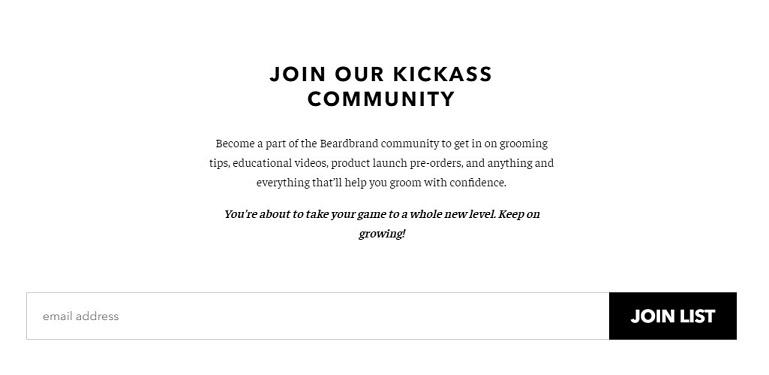
This company sends their subscribers a mix of helpful grooming tips, interesting grooming-related content, and promotional emails. Now, when a subscriber of theirs who enjoys their emails wants to buy, say, beard oil, who will be the first company that comes to his mind? Beardbrand.
So figure out what your subscribers want and give it to them. What problem do they have that you can offer a solution to in the form of an email?
2. Build a high-quality blog
Blogging is a great way to establish yourself as a thought leader in your field. For example, when Groove was struggling to attract customers, the company decided to bet everything on content marketing by building a blog.
As Groove’s founder Alex Turnbull recalls:
“We were only a few short months from running out of cash, and things didn’t look good. Our marketing efforts were failing, and nobody was visiting our site or signing up for our product. We were desperate. We were lost. And we were terrified. That was when we decided to finally get serious about content marketing.”
First, they reached out to all the content marketers that they respected and asked them for advice. A few responded. The Groove team was shocked by the feedback they got and realized they were doing it all wrong. They needed to find a unique angle for their blog.

Image via Groove
The team started scouring the Internet trying to understand their target audience—small business owners—better. This wasn’t just passively observing relevant discussions, either. Groove proactively reached out to people and asked if they could pick their brain.

Image via Groove
Eventually, the Groove team realized that people in their target audience were going through the exact same challenges they themselves were struggling with. So Groove decided to share their startup journey and launched a blog called “A SaaS Startup’s Journey to $ 100,000 in Monthly Revenue.”
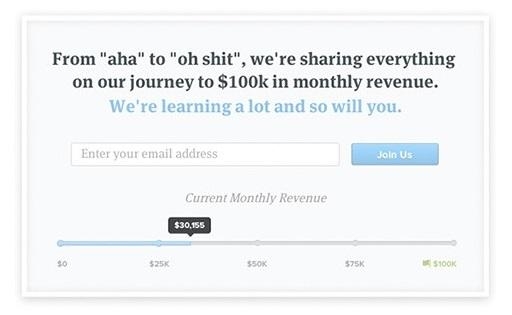
Image via Groove
And it resonated with their target audience immediately: 1,000 email subscribers within 24 hours, and 5,000 within a month! Three years later, in 2016, the blog was getting over 250,000 unique visitors per month, and Groove was generating over $ 5M a year in revenue.
Pay attention to how Groove built this high-quality blog: market research, unique angles, and superior content. That’s what makes a blog a great lead-generation strategy. The Groove blog attracts small business owners, those small business owners join Groove’s email list—over time they start liking and trusting the company and eventually, once they need help desk software, they purchase it from Groove.
Want to do the same with your company’s blog? Analyze the market, find a gap in it, and then fill that niche the best you can.
3. Start a podcast
Podcasts have become an integral part of our daily lives. We listen to them while on the way to work, while doing chores, and while out for a walk.
This is especially true for young people. According to Music Oomph, almost a third of American adults between the ages of 25 and 34 are podcast listeners.

Image via Music Oomph
A podcast can be a great way to generate leads for your business—as long as you can build a large enough audience.
For example, Tropical MBA, a popular business podcast that is focused on location independent entrepreneurship, allows the hosts Ian and Dan promote their membership website and grow the business.
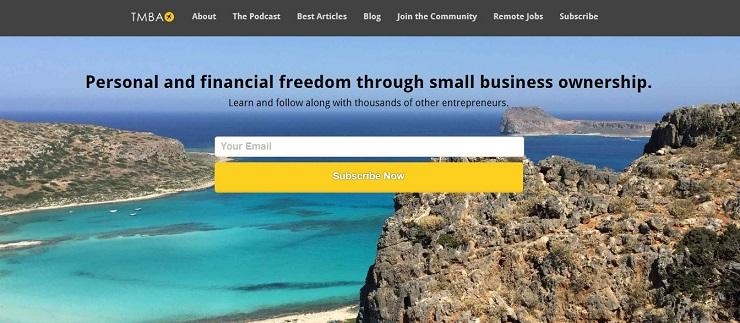
They started their podcast back in 2009. At the time, they were running an ecommerce business and were just learning the ropes of location independent entrepreneurship.
Here’s how Dan and Ian explain it:
“Back then we hardly knew anybody growing a location independent business, especially one that had real physical products. It seemed to us that most of the websites and podcasts weren’t run by people with compelling business experience or insights. We wanted to meet others who we felt were legit. So we started sharing our story on a more or less weekly basis. Because of that, many of the episodes were just me and Ian sharing the stuff we were learning directly from our day to day work. That business taught us a lot. It started with—literally—a dream, and ended with a multi-seven-figure exit.”
As their podcast grew, a community of like-minded individuals formed around it, and the hosts leveraged it to launch their membership website, their business conference, and their remote jobs board.
Of course, in 2009 podcasts were a nascent medium. Since then, they have exploded in popularity, so if you launch one now, you are in for an uphill battle that Dan and Ian never faced.
However, what you can learn from them is that they found a unique angle, produced interesting shows, and kept going at it for a decade. With a loyal following, you can promote email sign ups to generate leads and sales for your business.
4. Upload video content to YouTube
Did you know that Youtube is the second biggest search engine in the world? You can leverage this massive platform to generate leads if you can rank for popular search terms related to your field.
For example, Brian Dean, the SEO expert behind the popular Backlinko blog, built an SEO-focused YouTube channel.
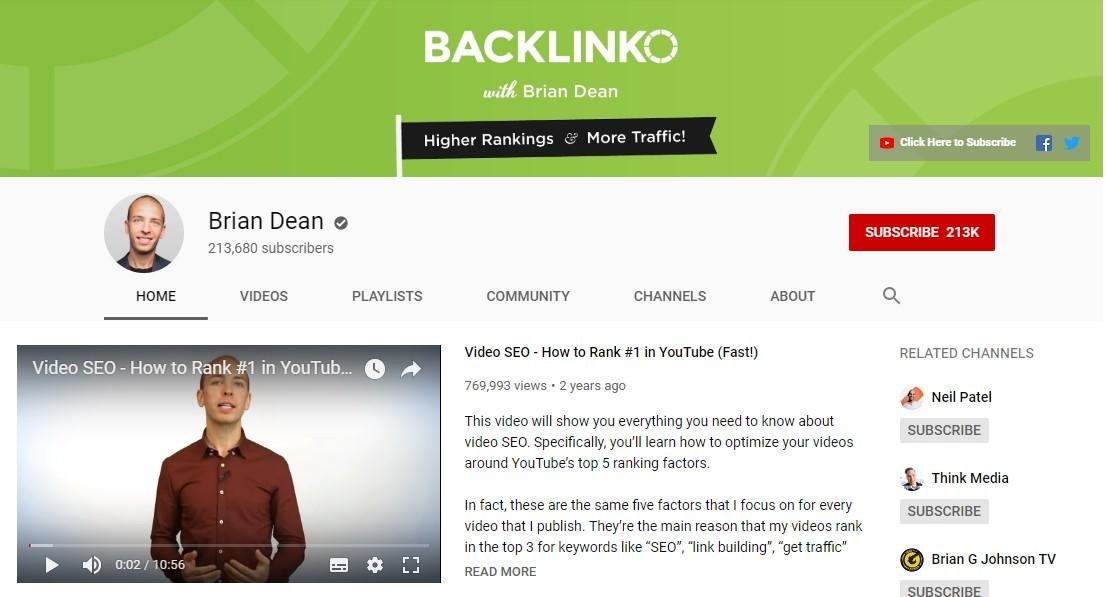
But he admits that when her first launched his channel, he struggled to get any views.
Here are some of the tips Brian shared:
- Use YouTube’s Search Suggest feature. Simply type in a word or a phrase into the search bar and look at the suggestions. These keywords are great because they are based on what people are actually looking for.
- Analyze popular videos in your niche. This is great way to identify keywords for YouTube, and then you can optimize your own videos around the same keywords.
- Identify the best keyword from the keyword list that you created. Look for low-competition keywords. You can do that by typing in a keyword and then checking the number of search results. The higher the number, the more competitive the keyword.
Now, Brian’s YouTube channel has 213,000 subscribers and generates leads for his business (he provides SEO training).
Your aim should be to convert YouTube subscribers to email list subscribers, so provide a link to an opt-in form at the end of your videos and encourage them to subscribe.
5. Write a book
Books might seem old school, but people still read them, and nothing gives you credibility like a book.
You don’t even have to sell your book in physical bookstores; it’s enough to simply put it on Amazon or even sell it as an ebook on your website.
Back in 2015, essayist and entrepreneur Taylor Pearson wrote a book called The End of Jobs, which not only made him a lot of money but also helped him to establish himself as an expert in entrepreneurship.

This was Taylor’s first book and he sold more than 5,000 copies during the launch month. How did he manage to do that?
Well, he had a background in marketing, and he decided to run his book like a business.
What exactly does “run his book like a business” means?
It all boiled down to these two key ideas:
- Allocate resources equally between product development and marketing. “As Gabriel Weinberg and Justin Mares point out in ‘Traction: How Any Startup Can Achieve Explosive Customer Growth,‘ almost every failed startup has a product. What failed startups don’t have is traction. Likewise, every author has a book. What most don’t have is marketing traction.”
- Iterate quickly and publicly. “Startups release products quickly to ever larger groups of customers because it both improves the quality of the product faster (due to tons of feedback) and weaves that feedback into the narrative of the product in a way that makes customers feel a sense of ownership. I tried to do the same with the book.”
He gathered feedback by sending the first draft to five close friends, then by publishing sections of his book on his blog, and finally by sending the second draft to 70 early readers.
He also created a landing page for The End of Jobs around six months before launching it, and everyone who signed up got a free copy after the launch. That way, he built a community around the book, which was very helpful in terms of social media buzz, early Amazon reviews, and word-of-mouth marketing.
When he finally launched, he set the price as free, and the book was downloaded thousands of times on the launch day and hit #1 in Small Business Top 100 Free category.
However, Taylor didn’t stop there. He kept actively promoting The End of Jobs during the launch week, and then leveraged the success of the launch to gain even more exposure.
Not only did Taylor made a lot of money from his book, but it also opened many doors to him – the credibility boost of being the author of a best-selling book helped him get more speaking gigs and consulting clients, as well as sell his own products.
Want to publish a book? Learn from Taylor. Writing is only half of it. Marketing is the other half. You need both if you want to capture those readers and turn them into email subscribers.
Bonus tip: Have a clear call to action!
Inbound marketing is much less aggressive than outbound marketing. However, that doesn’t mean that you should be passive and just sit there, fingers crossed, waiting for people to sign up for your email list.
No, if you want them to take action, you need to tell them what they should do next.
So make sure that each piece of content you create has a clear call to action that encourages people to sign up for your email list.
It doesn’t have to be intrusive:
- An opt form at the end of a blog post.
- A link at the end of a video.
- A reminder at the end of a podcast.
- A link at the end of an ebook.
Just make sure that you clearly convey the value the person will get from subscribing. You can’t expect people to subscribe to your email list just because. You need to give them a reason.
What’s next?
It’s not 2009 anymore. It’s 2019.
This means that while inbound marketing is without a doubt still a viable lead generation strategy, it is also more competitive than it has ever been.
Want to succeed with it? Then be prepared to invest time, energy, and money into consistently producing top-notch content.
And don’t expect quick results. It takes time to build an audience. But time will pass anyway. Why not spend it on building assets that will generate leads for your business for years to come?
Business & Finance Articles on Business 2 Community
(69)
Report Post